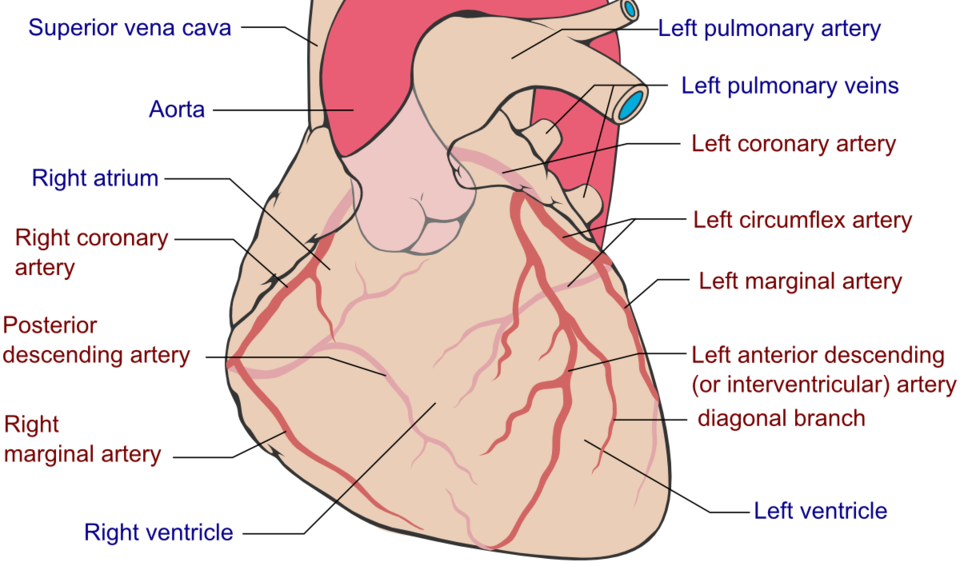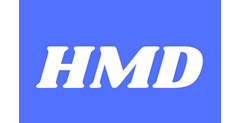Cardiology > Varicose Veins
Varicose Veins
Background
Varicose veins are dilated, elongated, and tortuous superficial veins most commonly affecting the lower extremities. They arise from chronic venous insufficiency due to incompetent venous valves, leading to venous stasis, increased hydrostatic pressure, and vein wall remodeling. Left untreated, varicose veins may progress to edema, skin changes, and venous ulcers.
II) Classification/Types
By Location:
- Great saphenous vein (GSV) – Most commonly affected
- Small saphenous vein (SSV)
- Non-saphenous or reticular veins
- Perforator veins
By Clinical-Etiology-Anatomy-Pathophysiology (CEAP) Classification:
- C0-C6: Ranges from no visible signs (C0) to active ulceration (C6)
- E: Etiology (congenital, primary, secondary)
- A: Anatomy (superficial, perforator, or deep system)
- P: Pathophysiology (reflux, obstruction, or both)
By Appearance:
- Telangiectasias (spider veins): <1 mm
- Reticular veins: 1–3 mm
- Varicose veins: >3 mm in diameter
III) Pathophysiology
Chronic venous hypertension due to valve incompetence or venous obstruction leads to retrograde blood flow and venous stasis. This distends the superficial veins, damages endothelial cells, and causes inflammation, capillary leakage, and remodeling of the vein wall. The cycle results in progressively worsening varicosities and can contribute to skin changes and ulceration.
IV) Epidemiology
- Sex: More common in women (2:1 female to male ratio)
- Age: Increases with age; prevalence rises after age 50
- Geography: More prevalent in industrialized countries
- Comorbidities: Obesity, pregnancy, sedentary lifestyle, and family history
Etiology
I) Causes
- Primary valve incompetence (idiopathic)
- Hereditary connective tissue weakness
- Pregnancy (increased venous pressure and hormonal effects)
- Prolonged standing or sedentary lifestyle
- Obesity (increased intra-abdominal pressure)
- History of DVT (post-thrombotic syndrome)
- Arteriovenous fistulas (rare)
II) Risk Factors
- Age >40
- Female sex
- Pregnancy (especially multiple pregnancies)
- Family history of varicose veins
- Occupations requiring prolonged standing (e.g., teachers, nurses)
- Obesity
- Prior leg trauma or surgery
Clinical Presentation
I) History (Symptoms)
- Aching or heaviness in the legs
- Leg fatigue worsened by prolonged standing
- Leg swelling, especially at the end of the day
- Visible dilated, tortuous veins
- Nocturnal cramps or restlessness
- Pruritus or burning over affected veins
- Skin discoloration, lipodermatosclerosis, or ulceration in advanced disease
II) Physical Exam (Signs)
Inspection:
- Visible dilated superficial veins
- Edema of the ankle or calf
- Hyperpigmentation, eczema, or atrophic skin changes
- Venous ulcers (usually medial malleolus)
Palpation:
- Veins may feel soft or rope-like
- Skin overlying veins may be warm and itchy
- Assess for tenderness (rule out thrombophlebitis)
Special Tests:
- Trendelenburg test (to assess valve incompetence)
- Percussion test (for saphenofemoral incompetence)
Differential Diagnosis (DDx)
- Deep vein thrombosis (DVT)
- Lymphedema
- Lipedema
- Chronic venous insufficiency
- Cellulitis
- Arterial insufficiency
- Superficial thrombophlebitis
- Popliteal vein aneurysm
Diagnostic Tests
Initial Evaluation:
- Duplex Doppler Ultrasound:
- Gold standard
- Assesses reflux (>0.5 sec) and vein diameter
- Identifies saphenous and perforator incompetence
Additional Tests (if needed):
- Photoplethysmography (PPG): To quantify venous reflux
- Venography: Rarely used; reserved for complex anatomy or planning intervention
- MRI or CT Venography: In cases of pelvic or deep vein involvement
Treatment
I) Medical Management
Conservative Management:
- Graduated compression stockings (20–30 mmHg for mild, 30–40 mmHg for severe)
- Leg elevation
- Regular exercise and weight loss
- Avoid prolonged standing/sitting
Medications (limited efficacy):
- Venoactive agents (e.g., horse chestnut extract, micronized flavonoids)
- Analgesics or topical corticosteroids for dermatitis
II) Interventional/Surgical
Minimally Invasive Procedures:
- Endovenous Laser Ablation (EVLA) or Radiofrequency Ablation (RFA):
- First-line therapy for saphenous vein incompetence
- Ultrasound-Guided Foam Sclerotherapy:
- Effective for small varicosities or residual veins after ablation
- Microphlebectomy:
- Removal of visible surface veins via tiny incisions
- Endovenous Laser Ablation (EVLA) or Radiofrequency Ablation (RFA):
Surgical Options:
- High ligation and stripping:
- Now largely replaced by endovenous techniques
- Subfascial Endoscopic Perforator Surgery (SEPS):
- For perforator vein incompetence in chronic venous insufficiency
- High ligation and stripping:
Patient Education, Screening, Vaccines
- Elevate legs several times daily
- Wear compression stockings during daytime
- Avoid prolonged standing or sitting
- Maintain healthy body weight
- Exercise regularly to improve venous return
- Skin care to prevent dermatitis and ulcers
- No vaccines specifically required, but routine vaccination per age group applies
Consults
- Vascular Surgery: For evaluation and treatment of moderate to severe cases
- Dermatology: For chronic venous stasis dermatitis or ulceration
- Wound Care: If ulcers are present
- Physical Therapy: For mobility support in elderly or sedentary patients
- Primary Care: For management of risk factors like obesity and hypertension
Follow-Up
- Monitor symptoms, skin changes, and compliance with conservative therapy
- Reassess with duplex ultrasound if symptoms worsen
- Post-procedure surveillance after EVLA/RFA for recanalization
- Annual evaluation for recurrence or new varicosities
- Lifelong compression therapy may be needed for patients with chronic venous insufficiency
Recommended
- Peripheral Vascular Disease
- Aortic Aneurysm
- Aortic Dissection
- Aortoiliac Disease
- Carotid Artery Dissection
- Giant Cell Arteritis
- Takayasu Arteritis
- Peripheral Arterial Disease
- Acute Limb Ischemia
- Arteriovenous Fistula
- Intermittent Claudication
- Hypertensive Vascular Disease
- Thromboangiitis Obliterans
- Deep Venous Thrombosis (DVT)
- Venous Thromboembolism
- Thrombophlebitis
- Varicose Veins
- Chronic Venous Insufficiency
- Stasis Ulcers
- Statis Dermatitis

Stay on top of medicine. Get connected. Crush the boards.
HMD is a beacon of medical education, committed to forging a global network of physicians, medical students, and allied healthcare professionals.
